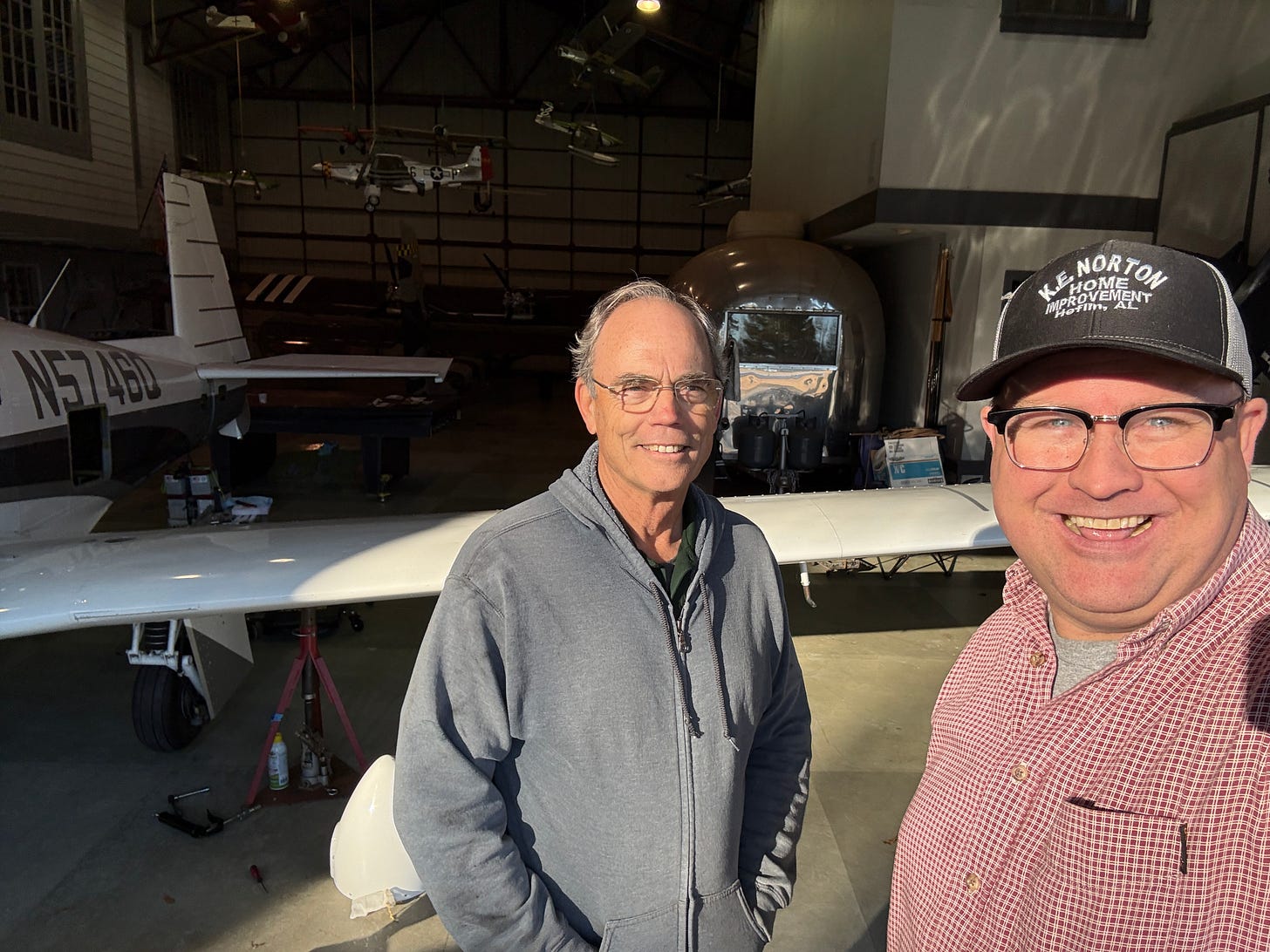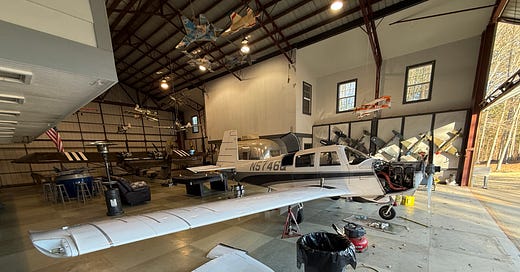January 1 approached with that yearly dread that aircraft owners know a little too-well: On December 31, it was legally airworthy. As the ball dropped in Times Square and thousands cheered the arrival of 2025, our Mooney turned into a pumpkin with zero physical change. The oil and oil filter had 27 hours on them, good for another 23 hours of operation. Nothing changed in the engine, with its four cylinders that’d been reworked two years prior still putting out good power. The propeller could still do its thing, and the airframe rang in its 60th year still fully capable.
Tearing the next page off the calendar, however, meant the Gray Gal now needed an annual inspection. Every year, light aircraft undergo an inspection that brings fear to the hearts of aircraft owners as we hand our winged chariots over to the mechanics and inspectors, praying they report back with a clean bill of health. Because of the way the FAA does things, that inspection doesn’t expire on the anniversary of the last inspection. It is good through the last day of the month of the anniversary of that inspection. By waiting until the first days of the month after the inspection, you can actually get 13 months out of your inspection…. which I’d been doing for several years.
Downside of that party trick? Over the course of a few years, I’d gone from inspections in October, when the weather in Georgia is pretty darn nice, to January, which is not as nice in an unheated hangar. But January 1 dawned with a forecast high of 50, so I headed to the hangar on New Year’s day, armed with a screwdriver, a flashlight, and one of my Mooney Maintenance Manuals to dive into the teardown. I’d managed to get some of the inspection panels opened in December, but the bulk of the work lay ahead.

A lot of mechanics hate working on Mooneys. I get it. I don’t really enjoy deep dives into other people’s Mooneys, either. There are a lot of tight spaces to work within, leaving many aircraft mechanics feeling like a square-body Chevrolet truck guy being asked to change the alternator on a tightly-packaged import car. There are two common sizes of inspection panels on the airplane; one takes eight machine screws, the other takes 10. A Cessna would take six sheet metal screws that all but fall out after a turn or three. At 32 threads per inch on those machine screws, that’s a lot of work whether you’ve got a nice ratcheting screwdriver or a speed handle. For the underwing inspection panels, I break out my electric drill, chuck up a brand-new #2 Phillips screwdriver bit, and insert a fresh battery to ease the workload.
Unfortunately, the belly of the fuselage beneath the cabin is skinned in large removable panels that come off to facilitate inspection, and they’re held in by an astonishing number of screws that engage clip-on nut plates, and these things are finicky. Those I do use the speed handle on, because a busted nutplate is both annoying and expensive—the trip to pick up a bag of them from Aircraft Spruce always devolves into a “hey since I’m going, I might as well buy some other stuff” situation.
All the wing panels don’t have to come off each year, as many were installed as access panels to facilitate construction in 1965, but every year I pull a few of the unnecessary ones just to have a look. Corrosion and fatigue know no boundaries. This year I was spraying some anti-corrosion treatment as I went so I opened even more of the things than normal.
There was more screwing going on than at a 1990s Tailhook association convention.
As the panels opened up, I found a few things that need attention. A hose needs to be rerouted now that I see it from a different angle. Some nut plates in the tail need to be replaced but that style of nut plate has been out of production for ages, demanding an alternative solution. A few hydraulic seeps here and there. Nothing earth-shattering, but they need doing.
At the same time, it’s a trip down memory lane. I’ve been removing these panels and peeking into these crevices for something like 27 years, having wrenched for the last two owners. I recall fun stories told as I sat on the hangar floor repacking wheel bearings, and coin tosses to see who gets stuck reinstalling the oil suction screen on the engine, for which safety wiring is an exercise in gymnastics because you can’t get to it easily, and bloodsport because I’ve yet to reinstall the thing without a scrape or puncture from the sharp point at the end of the lock wire.
The next day, I was repacking a wheel bearing as Larry King (no relation and certainly not the deceased suspender-sporting television presenter) rolled up for his part of the inspection. I’m an airframe and powerplant certified mechanic, which means I can do a lot of wrench work on airplanes. I’m not certified as an inspector, which means I cannot sign off the inspection itself. Larry, whose bread and butter is focused on the Pitts Model 12 aerobatic biplane, is an inspector. Once a year, he makes an exception to his aeronautical preference and put a flashlight and a mirror to a Mooney instead of the monster biplane. It’s a reunion and storytelling convention as much as an inspection, as Larry and I go way back.

Through my high school and college years, I hung out on the airshow circuit, traveling all around the southeast on weekends to luxurious destinations like Thomaston and Perry, Georgia, and Jacksonville and Lakeland, Florida. We had a fun group of pilots and could offer a number of acts to an airshow promoter. Larry flew the SP-95, a Russian aerobatic trainer and competition aircraft, and later the Pitts Model 12, an american muscle biplane utilizing the same Russian radial engine as the SP-95. He was also the nuts-and-bolts brain trust of the bunch, having been an aircraft mechanic in the military and later at an airline.
Two decades later, I relish our day of poking around the Mooney. He sees things that I’ve either ignored or normalized, and offers easier solutions than the Rube Goldberg-style displays of overthinking that I’m sometimes a little too inclined toward. In other words, he’s great at saving me from myself.

We got through the checklist in a day. He rode away that afternoon, leaving me with a to-do list and a pair of signatures in each logbook, attesting that the Mooney is legally an airplane again for another 12 months. So we started with an intact airplane that would fly fine, but illegally, and now we’ve got a legally-airworthy airplane, but a lot of assembly stands between its present state and putting wind across its wings again.
My idea of airworthy and the FAA’s interpretation are somewhat at odds, it seems.
Happy new year, friends.





You had me at “Tailhook!”